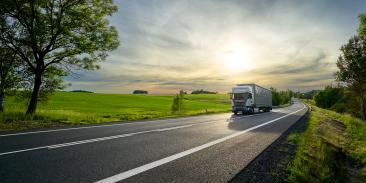Reports and publications
-
Higher temperatures in socially vulnerable US communities increasingly limit safe use of electric fans for cooling
Type: Column/Article
Date: August 10, 2023
This study from EDF scientists and partners uses hourly weather reanalysis data (1950–2021) to examine the temporal and spatial evolution of ambient climate conditions in the continental United States considered safe for fan use, focusing on high social vulnerability index regions. Authors find that some regions experience hundreds to thousands of hours per year that are too hot for safe fan use.
-
Preventing and mitigating hydrogen emissions from infrastructure
Type: Fact Sheet
Date: August 8, 2023
Maximizing hydrogen’s decarbonization benefits requires minimizing hydrogen emissions throughout the value chain. Hydrogen is a leak-prone gas that can indirectly warm the climate. While preventing and mitigating hydrogen emissions involves identifying/quantifying emissions from infrastructure, there are actions that can be taken now to help reduce future emissions.
-
With the help of new hydrogen measurement technology and experts in making trace gas measurements, EDF is launching the Hydrogen Emissions Measurement Study.
-
Hydrogen is a tiny, leak-prone molecule that can indirectly warm the climate. Thus, hydrogen emissions from its value chain could considerably undermine the anticipated climate benefits of a hydrogen economy. This EDF review paper synthesizes studies to provide an overview of the available knowledge on hydrogen emissions across value chains.
-
For a Clean, Safe Ride to School, Electric Buses Get Straight A’s. Propane? Needs Improvement
Type: Column/Article
Date: July 26, 2023
School districts around the country are considering a switch to buses that use less fuel, cost less, and, most importantly, provide safe and healthy trips to and from school. Only one option wins on each of these critical criteria: electric.
-
An audit on the Advanced Clean Fleets Rule is bad for California and bad for the country
Type: Column/Article
Date: June 29, 2023
Last month, the California Air Resources Board unanimously voted to adopt the Advanced Clean Fleets Rule, which sets purchase requirements for private and government fleets to increasingly transition to zero-emission trucks, and sets a 100% sales requirement for manufacturers in 2036.
-
An audit on the Advanced Clean Fleets Rule is bad for California and bad for the country
Type: Column/Article
Date: June 29, 2023
Last month, the California Air Resources Board unanimously voted to adopt the Advanced Clean Fleets Rule, which sets purchase requirements for private and government fleets to increasingly transition to zero-emission trucks, and sets a 100% sales requirement for manufacturers in 2036.
-
What policy instrument options are available to address methane emissions from the oil and gas sector?
Type: Column/Article
Date: June 5, 2023
New EDF Economics Discussion Paper describes the instrument options available to policy makers in both oil and gas producing as well as importing countries.
-
The 2023 farm bill is a historic opportunity for Congress to build on bipartisan efforts to help U.S. agriculture become more competitive, more resilient, and a global leader in conservation and climate solutions.
-
Carbon removal now ‘unavoidable’ part of fighting climate change, UN says
Type: Column/Article
Date: May 8, 2023
Emissions cuts alone won’t limit global warming to 1.5°C, IPCC report warns. But can carbon removal from land use and technology scale up in time?











 Subscribe by RSS
Subscribe by RSS